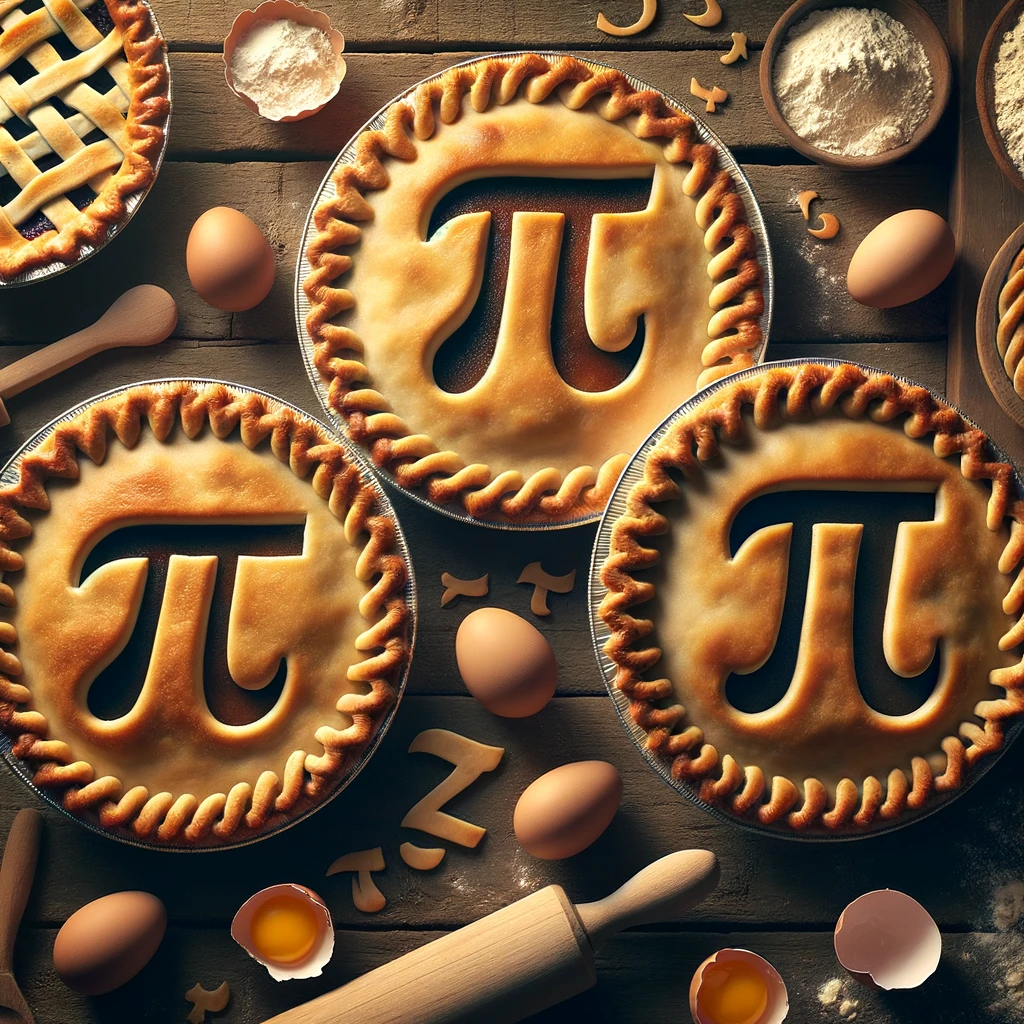Pi, Piem and Piphilology
Be aware, there are audio recordings of our project team members reading out the poems in this article!

As mentioned in the Story of Pi and Zu Chongzhi article , for over 4000 years, mathematicians around the world have sought to extend our understanding of 𝜋 by calculating its value to a higher level of accuracy.
Until the 20th century, the number of digits of 𝜋 that mathematicians had the grit to compute by hand remained in the hundreds, so memorising all the digits known at the time was possible. And because people all around the world were interested, piphilology was born.
The word “piphilology” itself is a play on the word “pi” and “philology” (the study of language in oral and written historical sources). It comprises the creation and use of mnemonic techniques to remember a span of digits of 𝜋. In this article, we will have a look at some of these techniques and the mnemonics created under them.
Piems
Among all the mnemonic techniques for memorising 𝜋, the most common one is probably the use of so-called piems (formed by combining the words “pi” and “poem”). Piems are poems that represent 𝜋 in a way such that the length of each word in letters represents the corresponding digit of 𝜋 in order. Here is an early example of piem:
“Now I need a drink, alcoholic of course, after the heavy lectures involving quantum mechanics.”
— Sir James Hopwood Jeans
Note how the first word has 3 letters, the second has 1 letter, the third has 4 letters, the fourth has 1 letter, the fifth has 5 letters, and so on. Such style of constrained writing is sometimes called the Pilish writing.
Evidently, short poems like this don’t take us very far down 𝜋’s infinite road; rather, they are intended more as amusing verses composed in irregular rhythm. One of the most ironic examples that can illustrate this is a piem which includes twenty decimal digits:
“How I wish I could enumerate pi easily, since all these bullshit mnemonics prevent recalling any of pi’s sequence more simply.”
— Peter M. Brigham
A logologist named Dmitri Borgmann composed a 30-word piem in his book, Language on Vacation: An Olio of Orthographical Oddities.
Now, a moon, a lover refulgent in flight,
Sails the black silence’s loneliest ellipse.
Computers use pi, the constant, when polite,
Or gentle data for sad tracking aid at eclipse.
— Dmitri Borgmann
A perhaps more poetic piem.
Sir, I bear a rhyme excelling
In mystic force and magic spelling
Celestial sprites elucidate
All my own striving can’t relate
Or locate they who can cogitate
And so finally terminate.
Finis.
— Unknown

It is notable that many published piems use truncation instead of any rounding at the closing end. This can lead to less accurate mathematical results when the first omitted digit is greater than or equal to five, however, this is under the consideration that, if any person intends to learn more decimal places of 𝜋 later on, it is guaranteed that they won’t see any misleading digits and memorise those from the piem. To illustrate this trend of piems, here comes an example:
“How I wish I could recollect, of circle round, the exact relation Archimede unwound.”
— Unknown
This piem gives 3.1415926535897, with the next digit of 𝜋, 9, truncated.
In some piems, there are some variations on the Pilish constraints. For example:
The following piem uses the separation of the poem’s title and main body to represent the decimal point.
Pie
I wish I could determine pi
Eureka, cried the great inventor
Christmas pudding, Christmas pie
Is the problem’s very center.
— Unknown
Below in the 35-word piem by David Saul, the word “nothing” is used to represent the digit zero.
It’s a fact
A ratio immutable
Of circle round and width,
Produces geometry’s deepest conundrum.
For as the numerals stay random,
No repeat lets out its presence,
Yet it forever stretches forth.
Nothing to eternity.
Note that the piem is laid out as a circle to provide some clue to the readers as to the purpose of the poem.
In lengthier Pilish writings, 10-letter words are used to represent the digit zero, and words of more than 10 letters are used to represent consecutive digits. For example, a 13-letter word, such as “piphilologist”, represents the digits 1,3. These rules are broadly used in a short story, “Cadaeic Cadenza”, which records the first 3,834 digits of 𝜋, as well as in a 10,000-word novel, Not A Wake. The former held the record for the longest Pilish text from 1996 to 2010, until the publication of the latter. Both of these pieces are written by Mike Keith.
The world has shared the remarkable creativity in putting up piems. You can find piems in many different languages here and here.
If you feel creative to formulate your own piem, have a go with this Pilish checker here!
Other aspects of piphilology
Song
A song titled “I am the first 50 digits of pi” was created in 2004 by Andrew Huang to serve as a mnemonic for the first fifty digits of 𝜋. The first line goes:
Man, I can’t – I shan’t! – formulate an anthem where the words comprise mnemonics, dreaded mnemonics for pi.
In 2013, Huang extended the song to include the first 100 digits of 𝜋, and changed the title to “Pi Mnemonic Song”. This song can be accessed here.
Larger memorisations of 𝜋
As modern super computers calculate 𝜋 with significantly higher accuracy, reaching 100 trillion in March 2022, people began to memorise more and more of the outputs. The world record for the number of digits of 𝜋 memorised had exploded since mid-1990s: the record certified by Guinness World Records is 70,000 digits, recited in India by Rajveer Meena on 21 March 2015. In 2006, a retired Japanese engineer Akira Haraguchi, claimed to have recited 100,000 decimal places, but this was not verified by Guinness World Records. For such large memorisations of 𝜋, poems have been proven to be rather inefficient. Methods that are typically used by the record-setting 𝜋 memorisers include remembering patterns in the numbers (for instance, the year 1971 appears in the first fifty digits of 𝜋), and the method of loci.

Image credit: Keenan Pepper, public domain via Wikimedia Commons.
Author
Yansong Li

